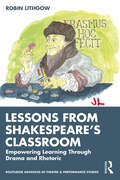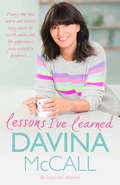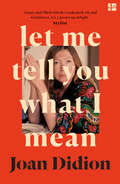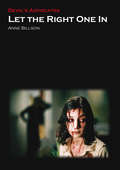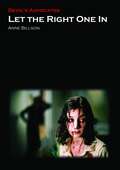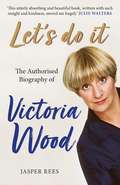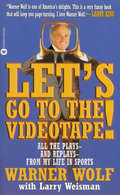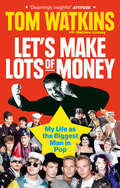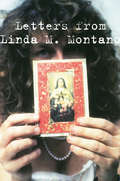- Table View
- List View
Lessons from Shakespeare’s Classroom: Empowering Learning Through Drama and Rhetoric (Routledge Advances in Theatre & Performance Studies)
by Robin LithgowThis volume explores the relationship between the emphasis on performance in Elizabethan humanist education and the flourishing of literary brilliance around the turn of the sixteenth century. This study asks us what lessons we can learn today from Shakespeare’s Latin grammar school. What were the cognitive benefits of an education so deeply rooted in what Demosthenes and Quintilian called "actio"—acting? Because of the vast difference between educational practice then and now, we have not often followed one essential thread: the focus on performance. This study examines the connections relevant to the education offered in schools today. This book will be of great interest to teachers, scholars, and administrators in performing arts and education.
Lessons in Perception: The Avant-Garde Filmmaker as Practical Psychologist
by Paul TaberhamNarrative comprehension, memory, motion, depth perception, synesthesia, hallucination, and dreaming have long been objects of fascination for cognitive psychologists. They have also been among the most potent sources of creative inspiration for experimental filmmakers. Lessons in Perception melds film theory and cognitive science in a stimulating investigation of the work of iconic experimental artists such as Stan Brakhage, Robert Breer, Maya Deren, and Jordan Belson. In illustrating how avant-garde filmmakers draw from their own mental and perceptual capacities, author Paul Taberham offers a compelling account of how their works expand the spectator’s range of aesthetic sensitivities and open creative vistas uncharted by commercial cinema.
Lessons in Perception: The Avant-Garde Filmmaker as Practical Psychologist
by Paul TaberhamNarrative comprehension, memory, motion, depth perception, synesthesia, hallucination, and dreaming have long been objects of fascination for cognitive psychologists. They have also been among the most potent sources of creative inspiration for experimental filmmakers. Lessons in Perception melds film theory and cognitive science in a stimulating investigation of the work of iconic experimental artists such as Stan Brakhage, Robert Breer, Maya Deren, and Jordan Belson. In illustrating how avant-garde filmmakers draw from their own mental and perceptual capacities, author Paul Taberham offers a compelling account of how their works expand the spectator’s range of aesthetic sensitivities and open creative vistas uncharted by commercial cinema.
Lessons I've Learned
by Davina McCall"I am a work in progress. There are times when I feel in control and like I know what I'm doing...and there are times (quite a few)(actually lots) when I've got no idea whats going on, where to turn, what to do, how to behave, and those are the times I've sought help! I have been helped by some extraordinary people. I've been supported and counselled through my recovery from drugs and alcohol. I've been hypnotised to get me through going to the bottom of the sea in a sub (life at the extreme). I've read a squibillion (that's a lot) of fantastic self help books and I have shared and shared with the greatest girlfriends and family of all time. These nuggets of wisdom have at times literally kept me going, so I thought I'd pay it forward and share them with you."Presenter, wife, mother, fundraiser, fitness inspiration and now bestselling author,is there nothing Davina McCall cannot do? But success didn't come easy for Davina, and she has faced many challenges along the way. In this long-awaited book, she shares all the tips and wisdom she has picked up on her 'work-in-progress' journey.Written in the accessible, easy-going and humorous way that Davina has become famous and loved for, Lessons I've Learned will motivate readers to reach their goals, find happiness and fulfillment, and feel more confident.
Let It Bleed: The Rolling Stones, Altamont, and the End of the Sixties
by Gerard Van der LeunLET IT BLEED takes you where no Rolling Stones book has before. Author and photographer Ethan Russell was one of only sixteen people--including the Rolling Stones--who made up the 1969 tour. He was with them in their hotel rooms, at rehearsals, and on stage. He tells the story of this monumental and historic tour firsthand, including recollections from band members, crew, security, and other sixties icons--like Abbie Hoffman and Little Richard--they met along the way. And he also includes amazing photos of the performers who toured with the Stones that year: the legendary Tina Turner and B. B. King. Through vivid quotes taken from his interviews with the band and crew, and through more than 220 revealing photographs, Russell takes you behind the scenes for an uncensored look inside the Rolling Stones' world at the end of the sixties. It was an idealistic time, with an overarching belief that music could bring us all together. But the events that led to the terrible violence and stabbing death at Altamont would change rock and roll forever.
Let Me Play the Lion Too: How to be an Actor
by Michael PenningtonHow do you prepare for your first day on the set? Why might a bad audition lead to a good job offer? How should you research? What's the effect of a long tour on your love-life? Can you have a glass of wine before a matinee? What's the difference between transitive and intransitive corpsing? What is stage fright?In Michael Pennington's highly personal guide and memoir there are sections on rehearsals, on television then and now, on who does what on a film set, on the disciplines and rewards of musical theatre, and five directors discuss why the scenery is better on radio. Disability and racial bias in the theatre are discussed and we sometimes hear from other, younger voices who are following parallel paths. Infectiously enthusiastic, both conversational and profound, Let Me Play the Lion Too draws on the author's fifty years of experience to celebrate the deadly serious, sometimes hilarious, often misunderstood but infinitely enriching life of a professional actor.
Let Me Tell You What I Mean
by Joan DidionTwelve early pieces never before collected that offer an illuminating glimpse into the mind and process of Joan Didion.
Let the Right One In (Devil's Advocates)
by Anne BillsonThese days it takes a very special vampire movie to stand out. Like Twilight, the Swedish film Let the Right One In is a love story between a human and a vampire but there the resemblance ends. Let the Right One In is not a romantic fantasy but combines the supernatural with social realism. Set on a housing estate in the suburbs of Stockholm in the early 1980s, it's the story of Oskar, a lonely, bullied child, who makes friends with Eli, the girl in the next apartment. 'Oskar, I'm not a girl,' she tells him and she's not kidding. They forge a relationship which is oddly innocent yet disturbing, two outsiders against the rest of the world. But one of these outsiders is, effectively, a serial killer. While Let the Right One In is startlingly original, it nevertheless couldn't have existed without the near century of vampire cinema that preceded it. Acclaimed film critic and horror novelist Anne Billson looks at how it has drawn from, and wrung new twists on, such classics as Nosferatu (1922), how vampire cinema has already flirted with social realism in films like Near Dark (1987) and how vampire mythology adapts itself to the modern world.
Let the Right One In (Devil's Advocates)
by Anne BillsonThese days it takes a very special vampire movie to stand out. Like Twilight, the Swedish film Let the Right One In is a love story between a human and a vampire but there the resemblance ends. Let the Right One In is not a romantic fantasy but combines the supernatural with social realism. Set on a housing estate in the suburbs of Stockholm in the early 1980s, it's the story of Oskar, a lonely, bullied child, who makes friends with Eli, the girl in the next apartment. 'Oskar, I'm not a girl,' she tells him and she's not kidding. They forge a relationship which is oddly innocent yet disturbing, two outsiders against the rest of the world. But one of these outsiders is, effectively, a serial killer. While Let the Right One In is startlingly original, it nevertheless couldn't have existed without the near century of vampire cinema that preceded it. Acclaimed film critic and horror novelist Anne Billson looks at how it has drawn from, and wrung new twists on, such classics as Nosferatu (1922), how vampire cinema has already flirted with social realism in films like Near Dark (1987) and how vampire mythology adapts itself to the modern world.
Lethal Repetition: Serial Killing in European Cinema
by Richard DyerSerial killing is an extremely rare phenomenon in reality that is none-theless remarkably widespread in the cultural imagination. Moreover, despite its rarity, it is also taken to be an expression of characteristic aspects of humanity, masculinity, or our times.Richard Dyer investigates this paradox, focusing on the notion at its heart: seriality. He considers the aesthetics of the repetition of nastiness and how this relates to the perceptions and anxieties that images of serial killing highlight in the societies that produce them.Shifting the focus away from the US, which is often seen as the home of the serial killer, Lethal Repetition instead examines serial killing in European culture and cinema – ranging from Scandinavia to the Mediterranean and from Britain to Romania. Spanning all brows of cinema – including avant-garde, art, mainstream and trash – Dyer provides case studies on Jack the Ripper, the equation of Nazism with serial killing, and the Italian giallo film to explore what this marginal and uncommon crime is being made to mean on European screens.
Let's Do It: The Authorised Biography of Victoria Wood
by Jasper Rees'I was born with a warped sense of humour and when I was carried home from being born it was Coronation Day and so I was called Victoria but you are not supposed to know who wrote this anyway it is about time I unleashed my pent-up emotions in a bitter comment on the state of our society but it's not quite me so I think I shall write a heart-warming story with laughter behind the tears and tears behind the laughter which means hysterics to you Philistines...'From 'Pardon?' by Vicky Wood, Aged 14. Bury Grammar School (Girls) Magazine, 1967In her passport Victoria Wood listed her occupation as 'entertainer' - and in stand-up and sketches, songs and sitcom, musicals and dramas, she became the greatest entertainer of the age. Those things that might have held her back - her lonely childhood, her crippling shyness and above all the disadvantage of being a woman in a male-run industry - she turned to her advantage to make extraordinary comedy about ordinary people living ordinary lives in ordinary bodies. She wasn't fond of the term, but Victoria Wood truly was a national treasure - and her loss is still keenly felt. Victoria had plenty of stories still to tell when she died in 2016, and one of those was her own autobiography. 'I will do it one day,' she told the author and journalist Jasper Rees. 'It would be about my childhood, about my first few years in showbusiness, which were really interesting and would make a really nice story.' That sadly never came to pass, so Victoria's estate has asked Jasper Rees, who interviewed her more than anyone else, to tell her extraordinary story in full. He has been granted complete and exclusive access to Victoria's rich archive of personal and professional material, and has conducted over 200 interviews with her family, friends and colleagues - among them Victoria's children, her sisters, her ex-husband Geoffrey Durham, Julie Walters, Celia Imrie, Dawn French, Anne Reid, Imelda Staunton and many more. What emerges is a portrait of a true pioneer who spoke to her audience like no one before or since.
Let's Explore Diabetes With Owls
by David SedarisA guy walks into a bar . . . From here the story could take many turns. A guy walks into a bar and meets the love of his life. A guy walks into a bar and finds no one else is there. When this guy is David Sedaris, the possibilities are endless. In Let's Explore Diabetes with Owls, Sedaris delights with twists of humour and intelligence, remembering his father's dinnertime attire (shirtsleeves and underpants) his first colonoscopy (remarkably pleasant) and the time he considered buying the skeleton of a murdered pygmy. By turns hilarious and moving, David Sedaris masterfully looks at life's absurdities as he takes us on adventures that are not to be forgotten.
Let's Go Stag!: A History of Pornographic Film from the Invention of Cinema to 1970 (Global Exploitation Cinemas)
by Dan ErdmanFor much of the 20th century, the underground pornography industry - made up of amateurs and hobbyists who created hardcore, explicit "stag films" - went about its business hounded by reformers and law enforcement, from local police departments all the way up to the FBI. Rumors of this illicit activity circulated and became the stuff of urban myth, but this period of pornography history remains murky.Let's Go Stag! reveals the secrets of this underground world. Using the archives of civic groups, law enforcement, bygone government studies and similarly neglected evidence, archivist Dan Erdman reconstructs the means by which stag films were produced, distributed and exhibited, as well as demonstrate the way in which these practices changed with the times, eventually paving the way for the pornographic explosion of the 1970s and beyond. Let's Go Stag! is sure to point the way for countless future researchers and remain the standard work of history for this era of adult film for a long time to come.
Let's Go Stag!: A History of Pornographic Film from the Invention of Cinema to 1970 (Global Exploitation Cinemas)
by Dan ErdmanFor much of the 20th century, the underground pornography industry - made up of amateurs and hobbyists who created hardcore, explicit "stag films" - went about its business hounded by reformers and law enforcement, from local police departments all the way up to the FBI. Rumors of this illicit activity circulated and became the stuff of urban myth, but this period of pornography history remains murky.Let's Go Stag! reveals the secrets of this underground world. Using the archives of civic groups, law enforcement, bygone government studies and similarly neglected evidence, archivist Dan Erdman reconstructs the means by which stag films were produced, distributed and exhibited, as well as demonstrate the way in which these practices changed with the times, eventually paving the way for the pornographic explosion of the 1970s and beyond. Let's Go Stag! is sure to point the way for countless future researchers and remain the standard work of history for this era of adult film for a long time to come.
Let's Go to the Videotape: All the Plays and Replays from My Life in Sports
by Larry Weisman Warner WolfAnyone who follows sports knows that Warner Wolf has revolutionized that world with his famous catch phrases and irrepressible spirit. Now, in "Let's Go to the Videotape!" he shares over three decades worth of humorous and unusual anecdotes from a fascinating career, including: -- opinions on sports rules -- game strategies that make no sense -- run-ins with the stars of sports and Hollywood -- including Shaquille O'Neal, Joe DiMaggio, Robert Redford, and Robert Duvall -- adventures and misadventures in the sports broadcasting game -- and much more.
Let's Make Lots of Money: Secrets of a Rich, Fat, Gay, Lucky Bastard
by Tom WatkinsLONGLISTED FOR THE PENDERYN MUSIC PRIZE 2017The coke-fuelled mania behind pop’s greatest successes Tom Watkins is the famously entertaining pop Svengali with killer commercial instincts and prodigious talent for design. He propelled the Pet Shop Boys, Bros and East 17, among others, to global stardom, all whilst maintaining a savage hedonistic lifestyle and a stellar art collection. His fingerprints are all over British pop, and he’s decided the time has come for a tell-all autobiography about the business behind the stars that shaped your life in the 80s and 90s. Follow Tom’s journey from his humble boyhood in post-war South-East London, to his teenage misdeeds and the birth of Rock and Roll; his days as a design student under the tutelage of Terence Conran and Rodney Fitch, to the excesses of the 80s and 90s where he became one of the original boy band innovators – the driving force behind the pop icons plastered on the walls of teenage girls’ bedrooms.Funny, unstoppable and outspoken, a razor-sharp and greatly respected businessman, marketing visionary, designer and art collector, Tom takes us through his extraordinary and colourful life into the inner-circle of 80s pop-culture. From hobnobbing with Bruce Sprinsteen to bust-ups with Bros, Tom has seen it all. Expect a gripping, gossipy, meticulously researched memoir of the drug-addled 80s and 90s, layered on top of an insightful and intelligent portrait of a recent but very different age, from the singular perspective of a man who played a huge role in defining the era and paved the way for industry moguls like Simon Cowell and Louis Walsh.
Letter from an Unknown Woman (BFI Film Classics)
by James NaremoreJames Naremore's study of Max Ophuls' classic 1948 melodrama, Letter from an Unknown Woman, not only pays tribute to Ophuls but also discusses the backgrounds and typical styles of the film's many contributors--among them Viennese author Stephan Zweig, whose 1922 novella was the source of the picture; producer John Houseman, an ally of Ophuls who nevertheless made questionable changes to what Ophuls had shot; screenwriter Howard Koch; music composer Daniéle Amfitheatrof; designers Alexander Golitzen and Travis Banton; and leading actors Joan Fontaine and Louis Jourdan, whose performances were central to the film's emotional effect. Naremore also traces the film's reception history, from its middling box office success and mixed early reviews, exploring why it has been a work of exceptional interest to subsequent generations of both aesthetic critics and feminist theorists. Lastly, Naremore provides an in-depth critical appreciation of the film, offering nuanced appreciation of specific details of mise-en-scene, camera movement, design, sound, and performances, integrating this close analyses into an overarching analysis of Letter's “recognition plot;” a trope in which the recognition of a character's identity creates dramatic intensity or crisis. Naremore argues that Letter's use of recognition is one of the most powerful in Hollywood cinema, and contrasts it with what we find in Zweig's novella.
Letter from an Unknown Woman (BFI Film Classics)
by James NaremoreJames Naremore's study of Max Ophuls' classic 1948 melodrama, Letter from an Unknown Woman, not only pays tribute to Ophuls but also discusses the backgrounds and typical styles of the film's many contributors--among them Viennese author Stephan Zweig, whose 1922 novella was the source of the picture; producer John Houseman, an ally of Ophuls who nevertheless made questionable changes to what Ophuls had shot; screenwriter Howard Koch; music composer Daniéle Amfitheatrof; designers Alexander Golitzen and Travis Banton; and leading actors Joan Fontaine and Louis Jourdan, whose performances were central to the film's emotional effect. Naremore also traces the film's reception history, from its middling box office success and mixed early reviews, exploring why it has been a work of exceptional interest to subsequent generations of both aesthetic critics and feminist theorists. Lastly, Naremore provides an in-depth critical appreciation of the film, offering nuanced appreciation of specific details of mise-en-scene, camera movement, design, sound, and performances, integrating this close analyses into an overarching analysis of Letter's “recognition plot;” a trope in which the recognition of a character's identity creates dramatic intensity or crisis. Naremore argues that Letter's use of recognition is one of the most powerful in Hollywood cinema, and contrasts it with what we find in Zweig's novella.
Letters and Literacy in Hollywood Film (Palgrave Close Readings in Film and Television)
by E. GallafentWe are so used to images of words that it is easy to ignore the different ways in which they work in films. This book explores both the letters that come in the post and the many other kinds that are offered to us on screen.
Letters from Linda M. Montano
by Linda M. MontanoLetters from Linda M. Montano is an anthology of writings by one of the seminal performance artists of the last century. It provides an autobiographical and historical record of Montano's artistic practice over the last thirty years, collecting together stories, fairytales, letters, interviews, manifestos and other previously unpublished writings. At the same time, the book acts as a 'how-to' manual for aspiring performance artists, offering practical guidance for students and a range of exercises that Montano has used in her teachings and workshops. Finally, Letters from Linda M. Montano represents a performance in itself, in which the artist considers the process of writing, creating and bringing the work to fruition as another form of 'endurance performance' similar to that of her durational works 14 Years of Living Art and Blood Family Art. COVER PHOTO COURTESY OF GISELA GAMPER.
Letters from Linda M. Montano
by Linda M. MontanoLetters from Linda M. Montano is an anthology of writings by one of the seminal performance artists of the last century. It provides an autobiographical and historical record of Montano's artistic practice over the last thirty years, collecting together stories, fairytales, letters, interviews, manifestos and other previously unpublished writings. At the same time, the book acts as a 'how-to' manual for aspiring performance artists, offering practical guidance for students and a range of exercises that Montano has used in her teachings and workshops. Finally, Letters from Linda M. Montano represents a performance in itself, in which the artist considers the process of writing, creating and bringing the work to fruition as another form of 'endurance performance' similar to that of her durational works 14 Years of Living Art and Blood Family Art. COVER PHOTO COURTESY OF GISELA GAMPER.
Level 2 Health & Social Care Diploma DEM 202 Assessment Workbook: The person-centred approach to the care and support of individuals with dementia (PDF)
by Maria Ferreiro PeteiroThese short assessment workbooks are designed to be written into and let you generate all knowledge evidence for your Health and Social Care L2 Diploma. You will generate the correct evidence by filling in the subject-specific questions and scenarios. Summaries of what you need to know and on what you should plan to demonstrate when you are being observed will help you make further progress too. A mapping grid is provided the the L2 Preparing to Work in Adult Social Care, so that you can use these workbooks for that qualification too.
A Level Film Studies: The Essential Introduction (Essentials)
by Sarah Casey Benyahia John White Freddie GaffneyThis essential book covers the key areas for A Level Film Studies students, building confidence through a careful, step-by-step approach. The first part of the book establishes a basic understanding of the grounding of film analysis in the various elements of film construction, mise en scène, cinematography, editing, sound and performance, developing the knowledge students have of movies whilst challenging them to consider new films and ideas. Key theoretical approaches around narrative, genre, representation, spectatorship and authorship are introduced in part two, before we consider specific national cinemas from around the world in parts three and four. In part five, the book assesses a range of slightly different film experiences, looking at silent cinema, experimental films and documentaries; before, finally, part six shifts to evaluating creative approaches to students’ own filmmaking. Specifically designed to be user-friendly, the book has an easy-to-follow design, includes more than sixty colour images and is packed with features such as: 1. case studies on a range of films and filmmakers, 2. activities on such films as Sunrise (Murnau, 1927, US), Vertigo (Hitchcock, 1958, US), Do the Right Thing (Lee, 1989, US), We Need to Talk About Kevin (Ramsay, 2011, UK), Stories We Tell (Polley, 2012, Can), 3. definitions of key terms, 4. suggestions for further reading and website resources. Matched to the current exam specification, A Level Film Studies: The Essential Introduction covers everything students need to study as part of the course. The book is supported by a companion website at www.alevelfilmstudies.co.uk offering further advice and activities.
A Level Film Studies: The Essential Introduction (Essentials)
by Sarah Casey Benyahia John White Freddie GaffneyThis essential book covers the key areas for A Level Film Studies students, building confidence through a careful, step-by-step approach. The first part of the book establishes a basic understanding of the grounding of film analysis in the various elements of film construction, mise en scène, cinematography, editing, sound and performance, developing the knowledge students have of movies whilst challenging them to consider new films and ideas. Key theoretical approaches around narrative, genre, representation, spectatorship and authorship are introduced in part two, before we consider specific national cinemas from around the world in parts three and four. In part five, the book assesses a range of slightly different film experiences, looking at silent cinema, experimental films and documentaries; before, finally, part six shifts to evaluating creative approaches to students’ own filmmaking. Specifically designed to be user-friendly, the book has an easy-to-follow design, includes more than sixty colour images and is packed with features such as: 1. case studies on a range of films and filmmakers, 2. activities on such films as Sunrise (Murnau, 1927, US), Vertigo (Hitchcock, 1958, US), Do the Right Thing (Lee, 1989, US), We Need to Talk About Kevin (Ramsay, 2011, UK), Stories We Tell (Polley, 2012, Can), 3. definitions of key terms, 4. suggestions for further reading and website resources. Matched to the current exam specification, A Level Film Studies: The Essential Introduction covers everything students need to study as part of the course. The book is supported by a companion website at www.alevelfilmstudies.co.uk offering further advice and activities.
Lexikon Literaturverfilmungen: Verzeichnis deutschsprachiger Filme 1945-2000
by Klaus M. Schmidt Ingrid SchmidtDas Lexikon schließt die Lücke, die seither zwischen der Lexikografie zum Film und den Nachschlagewerken zur Literatur bestand. Es bietet einen Gesamtüberblick über die Literaturverfilmungen in den deutschsprachigen Ländern. Für die zweite, erweiterte und aktualisierte Auflage wurde der Band vollständig durchgesehen und um ca. 1.700 Einträge ergänzt. Somit umfasst er nun die Filmproduktionen der Jahre 1945 bis 2000. Nahezu 6.000 Kino- und Fernsehfilme werden durch vier Verzeichnisse zugänglich gemacht; möglich ist das Suchen nach Autoren, Regisseuren, Buch- und Filmtiteln.
